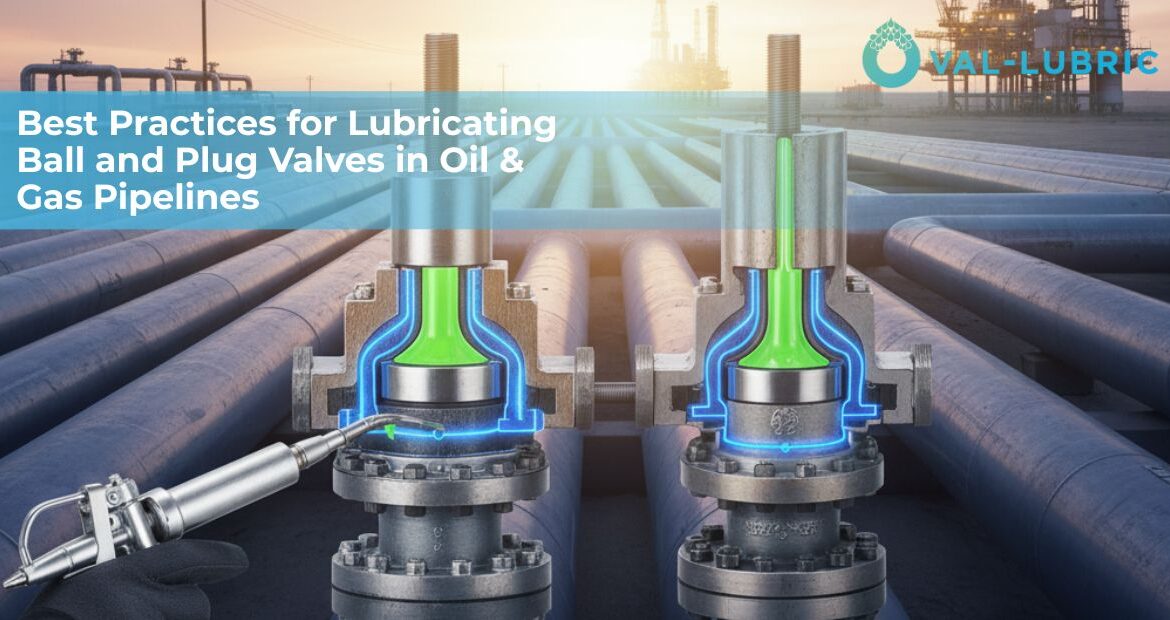Introduction
Ball and plug valves are essential for controlling flow in oil and gas pipelines. If these valves are not properly maintained, they can seize up, leak, or fail—causing serious safety risks and costly downtime. According to industry experts, valve maintenance is a critical part of any pipeline damage prevention program. One of the most effective ways to ensure reliability is through proper lubrication practices. In this article, we’ll outline best practices for lubricating ball and plug valves and explain how Val-Lubric’s solutions can help keep pipelines running safely.
Why Valve Lubrication Matters
-
Ensures smooth valve operation under high pressure.
-
Prevents internal corrosion and damage.
-
Extends the service life of valves in harsh environments.
-
Protects against blowouts or uncontrolled leaks.
Best Practices for Lubricating Ball Valves
1. Use the Right Lubricant
-
Choose lubricants specifically designed for hydrocarbons, natural gas, and chemical pipelines.
-
Avoid generic greases that break down under high pressure or extreme temperatures.
2. Apply Proper Lubrication Pressure
-
High-pressure grease guns (up to 15,000 PSI) are ideal for injecting lubricant into tight valve seats.
-
For extended maintenance, use a hydraulic sealant pump like Val-Lubric’s model rated at 10,000–11,000 PSI for consistent, high-volume lubrication.
3. Establish a Maintenance Schedule
-
Lubricate valves at set intervals depending on pipeline flow, operating pressure, and environment.
-
Increase frequency in corrosive or high-temperature environments.
Best Practices for Lubricating Plug Valves
1. Inspect Before Lubricating
-
Check for leaks, seat wear, or mechanical damage before injecting sealant.
2. Flush Debris and Contaminants
-
Use cleaning fluids or flush pumps to remove dirt and hardened sealants before lubrication.
3. Apply Sealant Correctly
-
Inject sealant evenly across valve seats.
-
Avoid over-pumping, which can damage seals or distort valve operation.
Common Mistakes to Avoid
-
Using incompatible lubricants that cause chemical breakdown.
-
Neglecting lubrication in valves that are “rarely used.” Idle valves often fail during emergencies.
-
Ignoring small leaks or pressure drops, which are early signs of seal failure.
Val-Lubric Solutions for Pipeline Valve Maintenance
At Val-Lubric, we specialize in hydraulic sealant pumps, grease guns, and repair kits that help keep valves operating at peak performance. Our Hydraulic Sealant Pump provides the pressure and capacity needed for critical oil & gas valve lubrication tasks.
Conclusion
Ball and plug valves play a vital role in pipeline safety and efficiency. By following best practices—using the right lubricants, applying correct pressure, maintaining a schedule, and avoiding common mistakes—maintenance teams can extend valve life and prevent costly failures. With the right tools, like Val-Lubric’s hydraulic sealant pumps, companies can ensure reliable operations across oil and gas networks.

